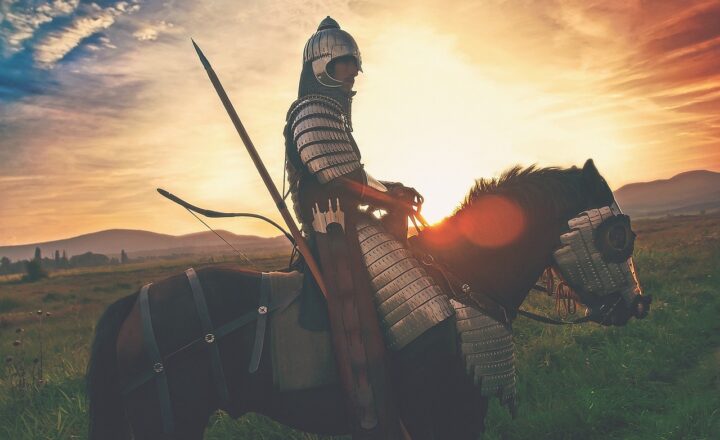
The crossbow, a significant advancement in weaponry during the medieval period, transformed military strategies and altered the very fabric of warfare across Europe and the Mediterranean. Designed for efficiency and impact, the crossbow became a formidable tool of both the common soldier and nobility alike, making it a pivotal force on the battlefield.
1. The Origin of the Crossbow
The origins of the crossbow can be traced back to ancient China around the 5th century BC, where it was known as the ‘Nu.’ It was primarily used against infantry and cavalry, expanding military capabilities significantly. By the time it reached Europe in the 10th century, its design had evolved, showcasing a simpler yet effective mechanism that could be operated by soldiers with minimal training.
The ease of use and the ability to deliver powerful shots made the crossbow an invaluable asset in the hands of foot soldiers, who historically had relied on less effective ranged weapons such as the bow. The crossbow’s development marked a departure in terms of what could be expected from infantry units, laying the foundations for its widespread adoption in medieval armies.
2. Mechanism and Technology
The crossbow functions by horizontally stringing a bow over an arched or rectangular stock. The tension in the drawn string is released when the trigger is pulled, launching a projectile called a bolt. This design allows for remarkable power due to the use of mechanical advantage, enabling a much stronger pull compared to that of a standard bow.
One notable advancement in crossbow technology was the inclusion of the ‘self-cocking’ mechanism. This innovation allowed soldiers to rapidly reset the string without needing an additional person or complex mechanism, thereby increasing the rate of fire. Some models even featured a winding mechanism that further enhanced the weapon’s force and usability, allowing for a high level of efficiency on the battlefield.
The versatility of its design meant that crossbows could easily be adapted for various combat scenarios—including siege warfare—where they were used to penetrate armor and fortifications that traditional archery struggled to breach.
3. Tactical Advantages of the Crossbow
The introduction of the crossbow brought several tactical advantages to medieval warfare:
- Armor Penetration: The heavy bolts of crossbows were designed to penetrate armor, making them highly effective against armored knights—a dominant force on the medieval battlefield.
- Effective Range: Crossbows offered a respectful range advantage over traditional bows. Capable of shooting accurately at distances beyond 200 yards, they could engage enemies before they closed the gap.
- Less Training Required: Unlike traditional longbowmen who needed years of training to become proficient, the crossbow could be wielded effectively after just a few days of practice, widening the pool of potential soldiers.
- Psychological Warfare: The ominous sound of the crossbow being drawn, coupled with its lethal capabilities, instilled fear in opposing forces, leading to significant psychological impact during battles.
These tactical advantages contributed to the rapid rise in adoption across various armies in Europe, transforming dynamics on engagement fronts and solidifying the crossbow’s status as a changing force in medieval warfare.
4. The Crossbow and the Feudal System
The feudal system greatly influenced the adoption of the crossbow. Lords sought ways to defend their domains against invaders, opting for a weapon that could be effectively utilized by their vassals, irrespective of their social standing or training. This led to a significant shift in the military structure of the time, where common foot soldiers wielding crossbows could stand toe-to-toe with mounted knights.
This democratization of military power posed a threat to the established social hierarchy, as peasants wielding crossbows could combat the nobility, blurring the lines of traditional class boundaries in warfare. The crossbow thus became a symbol of the challenges posed by the rising power of commoners against the traditional elite.
5. Religious and Cultural Perceptions
The crossbow was controversial for various reasons, notably its impact on chivalric ideals. The Catholic Church even issued prohibitions against its use. The Lateran Council of 1139 condemned the crossbow as a weapon of unjust warfare, arguing that its ease of operation made it suitable for all, including those not quipped by the code of chivalry. This resulted in debates surrounding morality in warfare, further entrenching the weapon’s notoriety.
Despite these ecclesiastical challenges, the effectiveness of the crossbow on the battlefield meant that it remained widely used. Its reputation as a weapon of fear and destruction solidified throughout the Middle Ages, particularly during the Crusades when it saw considerable action against armored foes.
6. Decline in Use and Legacy
By the late medieval period, advancements in weaponry such as the longbow and firearms began to overshadow the crossbow. Weapons like the arquebus, which offered similar range but greater firepower, contributed to the gradual decline of the crossbow in military significance.
However, the crossbow’s impact on military history cannot be understated. It remains an iconic representation of medieval warfare, influencing tactics and strategy for centuries. Its design has inspired modern variations even today, making it a revered part of military history.
In fact, some military units still employ crossbows for specific purposes, including training and as a tool for hunting, a testament to its lasting legacy.
Conclusion
The crossbow’s role in medieval warfare marked a turning point in military history. From its efficient design and ease of use to its profound impact on societal structures and warfare strategies, the crossbow transformed the way battles were fought and who could participate in them. It not only revolutionized how wars were waged but also disrupted the established order, reinforcing themes of equality and access to military power in a time where such concepts were foreign.
As we reflect on the crossbow’s significance, it serves as a reminder of how innovations in warfare can usher in societal shifts, altering the course of history in unexpected ways.






